Most gardeners know that brussels sprouts prefer cool temperatures, but these tiny wannabe cabbages take the concept of cold-weather gardening to the next level.
With the right care, you can grow a fresh harvest all through the winter.
That means when your summer garden has turned up its toes and called it a day, you can be nibbling on fresh sprout slaw or enjoying them roasted with bacon.
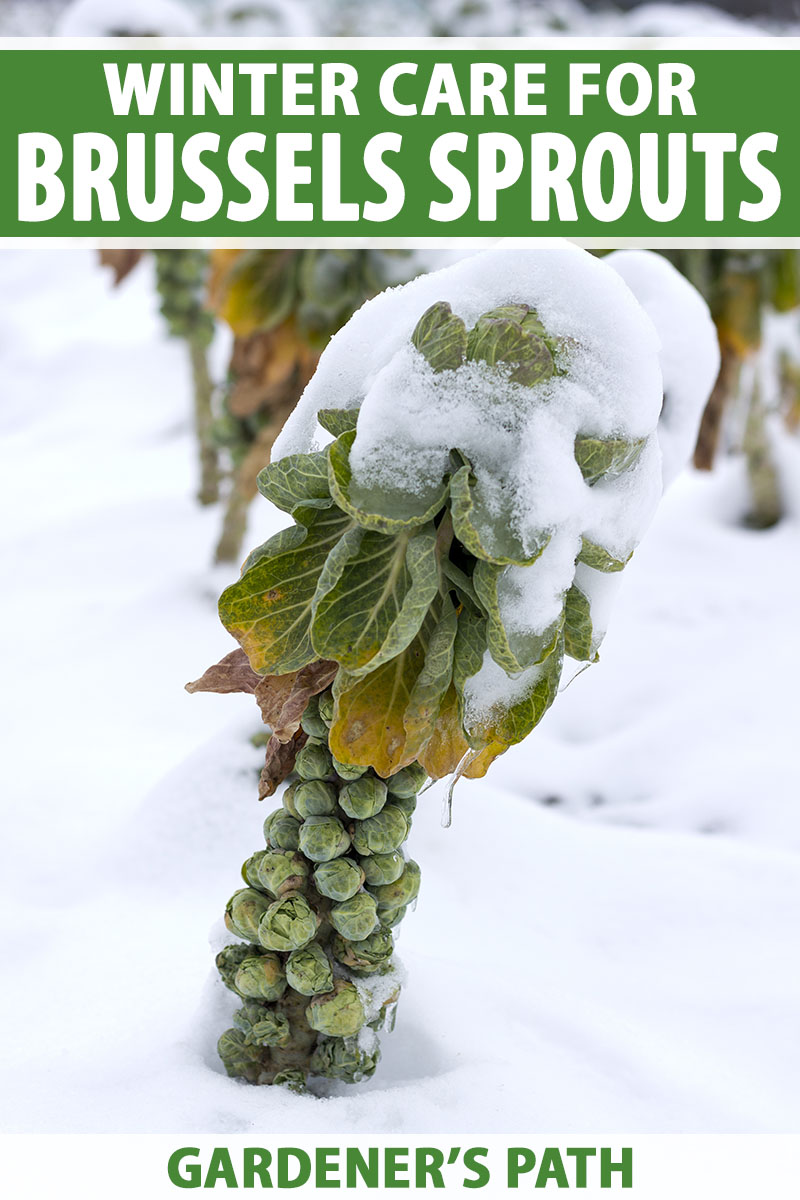
We link to vendors to help you find relevant products. If you buy from one of our links, we may earn a commission.
I’ll let you in on a little secret: Growing veggies in the winter isn’t that much different from growing them in the summer, but instead of battling the heat, you’ll be confronting the cold.
There’s something wonderfully satisfying about pulling a fresh harvest out of your garden in the winter months.
To learn more about how to care for brussels sprouts in winter, here’s what I’ll cover:
What You’ll Learn
Winter Care for Brussels Sprouts
Brussels sprouts, Brassica oleracea var. gemmifera, are a cool-weather crop with a long growing season – typically between 80-130 days from planting to harvest, depending on the variety.
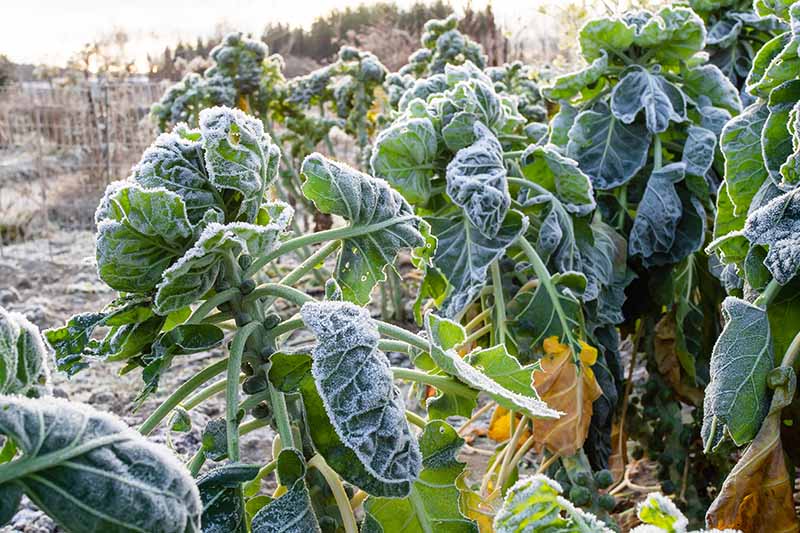
They thrive in temperatures between 45-75°F, and can survive short periods down to 20°F.
A light frost or two can improve the flavor of the sprouts and make them taste sweeter. The plant reacts to cold temperatures by breaking down starches in the cells into sugars that act like a natural antifreeze.
The strategy for growing these cruciferous veggies during the winter months depends on your location.
They are suitable for growing in USDA Hardiness Zones 3-9, with some varieties exhibiting more cold-hardiness than others.
In areas where the temperatures mostly remain above freezing, with the occasional dip here and there, they won’t need any special winter care.
If you live somewhere that regularly experiences freezing temperatures, you don’t have to abandon your winter harvest dreams.
In colder locations, you don’t have to abandon your winter harvest dreams. There are ways of creating a slightly warmer microclimate in your garden or providing winter protection for your crops.
You can learn more about how to grow brussels sprouts in our complete guide.
The Ideal Spot
You may not realize it, but even if you live in, for example, Zone 7b, you may have spots in your yard with conditions closer to those of Zone 8b.
These microclimates can be a lifesaver when it comes to growing vegetables during the winter months.

Even if you live in an area that doesn’t get intensely cold, you still want to give your plants the best chance possible to make it through the inhospitable weather.
That means choosing to plant your crops in areas that stay a little warmer than other spots. Look for places next to a cement or brick wall, which will absorb heat from the sun during the day and act like a natural heater.
Avoid low lying areas of the garden or locations right next to water, which tend to get hit with colder temperatures. You should also stay away from hilltops, which often experience more wind.
If you live in an area that experiences high winds, you can plant them next to a windbreak like a fence or hedge for an added layer of protection.
Also, because it tends to be wetter during the winter months in some locations, make sure your soil is well-draining. If it isn’t, you can add sand to improve the drainage.
In his book, “Four Season Harvest,” available on Amazon, Eliot Coleman outlines how to create microclimates in your garden.

You can find this book via Amazon.
When to Plant
Early winter is the best time to harvest because flavors tend to peak after a frost or two, but you avoid the risk of a heavy freeze.
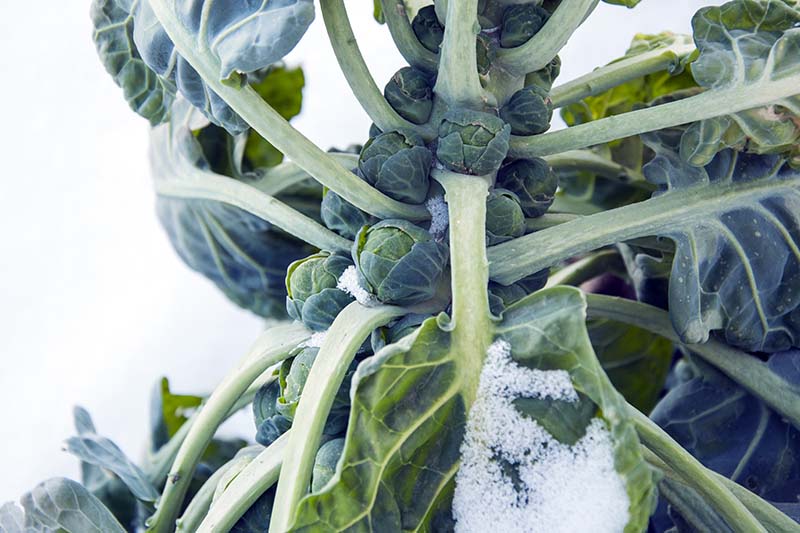
Check your seed packet to determine how long your selected variety takes to mature and count back from the day you want to harvest.
Many brussels sprout varieties take around 100 days to mature, so if you want to have a bunch of fresh sprouts on your holiday table, you’ll need to get them in the ground in early September.
That said, don’t be afraid to shoot for a January or February harvest if you want. Just be aware that you may need to take some action to protect your vegetables if Mother Nature takes a turn.
If you live in a place where it’s going to be warmer than 75°F in August or September, then you should start your seeds indoors and transplant them as the air temperatures cool.
Provide Protection
Inevitably when you garden in the winter months, you’ll experience weather that isn’t right for your plants. A prolonged freeze that turns the ground solid will kill your brussels sprouts.
If you have a hard freeze in the forecast, you can give them a blanket of protection by applying a layer of mulch and/or floating row covers.
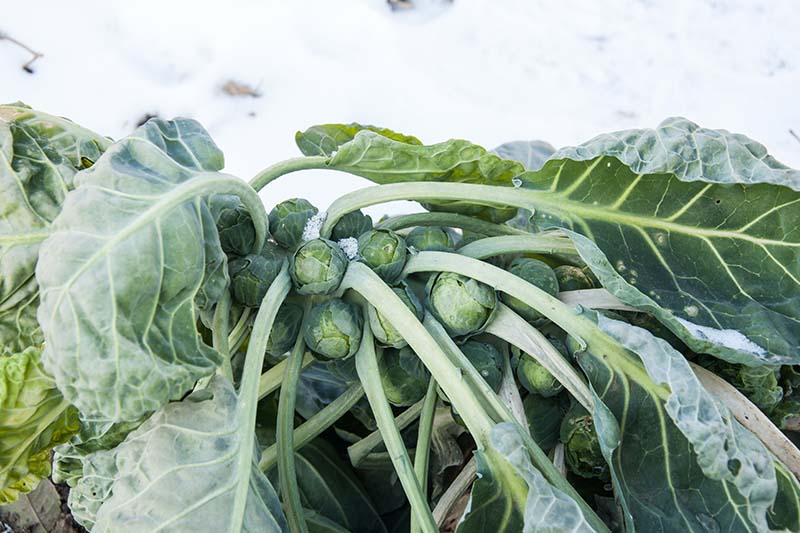
A thick layer of a natural mulch such as straw or leaves will increase the temperature of the soil and prevent it from freezing. Mulching also helps to protect the ground from heaving as a result of repeated freezing and thawing.
Place several inches of mulch in a 12-inch diameter around each plant, or simply cover your entire bed if you have multiple plants growing together.
Floating row covers increase the temperature around the plants and prevent them from freezing. Drape the fabric over your plants and secure at the soil line with rocks, stakes, or bricks. Make sure there are no open gaps where cold air can sneak in.
If you are worried about snow pressing down on the covers and bending your plants, you can put a few stakes or a wire cage under the cover to act as a support.
A row cover is useful for when you have extended periods of cold weather, they’re not necessary in the case of a quick frost.
Between a layer of mulch and a row cover, your little buttons will live through the harsh weather and be ready for eating in no time.
You can also grow your crops in a cold frame or greenhouse if you live in an area where temperatures drop well below freezing for more than a few days.
A tall cold frame works well because you can leave it open early on in the growing season and then close it as the temperatures fall.
Another benefit of providing a little winter protection is that deer are going to want to take a bite out of your harvest, as well.
There isn’t a lot of food out there for these herbivores in the coldest months, so when they stumble on your garden, you’d better believe they’ll want to take advantage.
This Winter You’ll Dine Well
Many of us hated brussels sprouts as a kid and it turns out, there’s a reason for that. Most commercial sprouts of yore – pre-1990s – were more bitter than the ones grown today, as NPR revealed in a story in 2019, about the booming popularity of these previously maligned veggies.
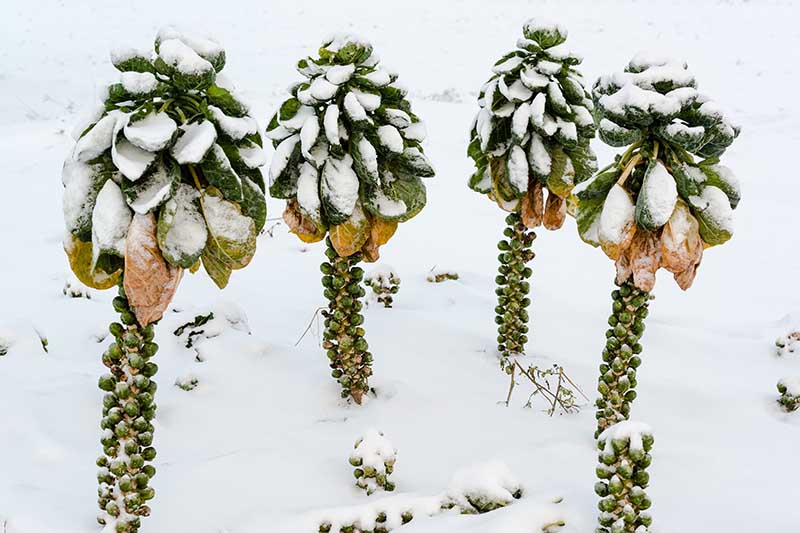
So why does that matter to us winter gardeners? Just as scientists figured out how to breed sweeter buttons and growers started searching for heirlooms that were naturally sweeter, winter sprouts tend to end up with more natural sugars than those growing in the fall and spring, since they are exposed to that flavor-enhancing chilly air.
Have you grown brussels sprouts in winter? Share your tips in the comments section below so fellow cold weather gardeners can learn from your adventures!
And for more information about growing brussels sprouts in your garden, check out these guides next:
- How to Harvest Brussels Sprouts
- Pruning Brussels Sprouts: Tips for Success
- How to Identify and Manage Common Brussels Sprout Diseases
© Ask the Experts, LLC. ALL RIGHTS RESERVED. See our TOS for more details. Uncredited photos: Shutterstock. With additional writing and editing by Clare Groom.
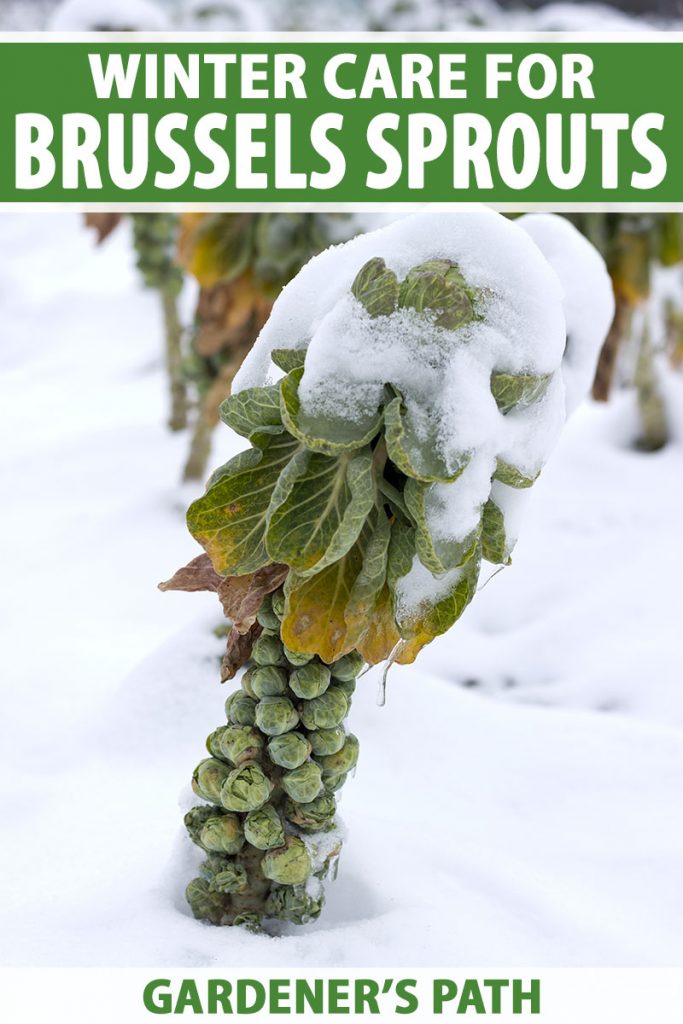


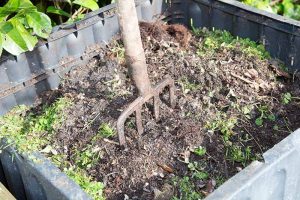
I’m in East Texas and we got down to 21 and I came out to this in the morning. Are they a loss? Will they recover?
They very well could recover, don’t give up hope! It does look like there is some leaf damage, but that doesn’t mean that the roots are dead. If they are okay, new leaves will form to replace the damaged ones. We were hit with 20°F temps followed by a foot of snow in my area, and while it took a few weeks for my plants to recover, they are thriving once again.